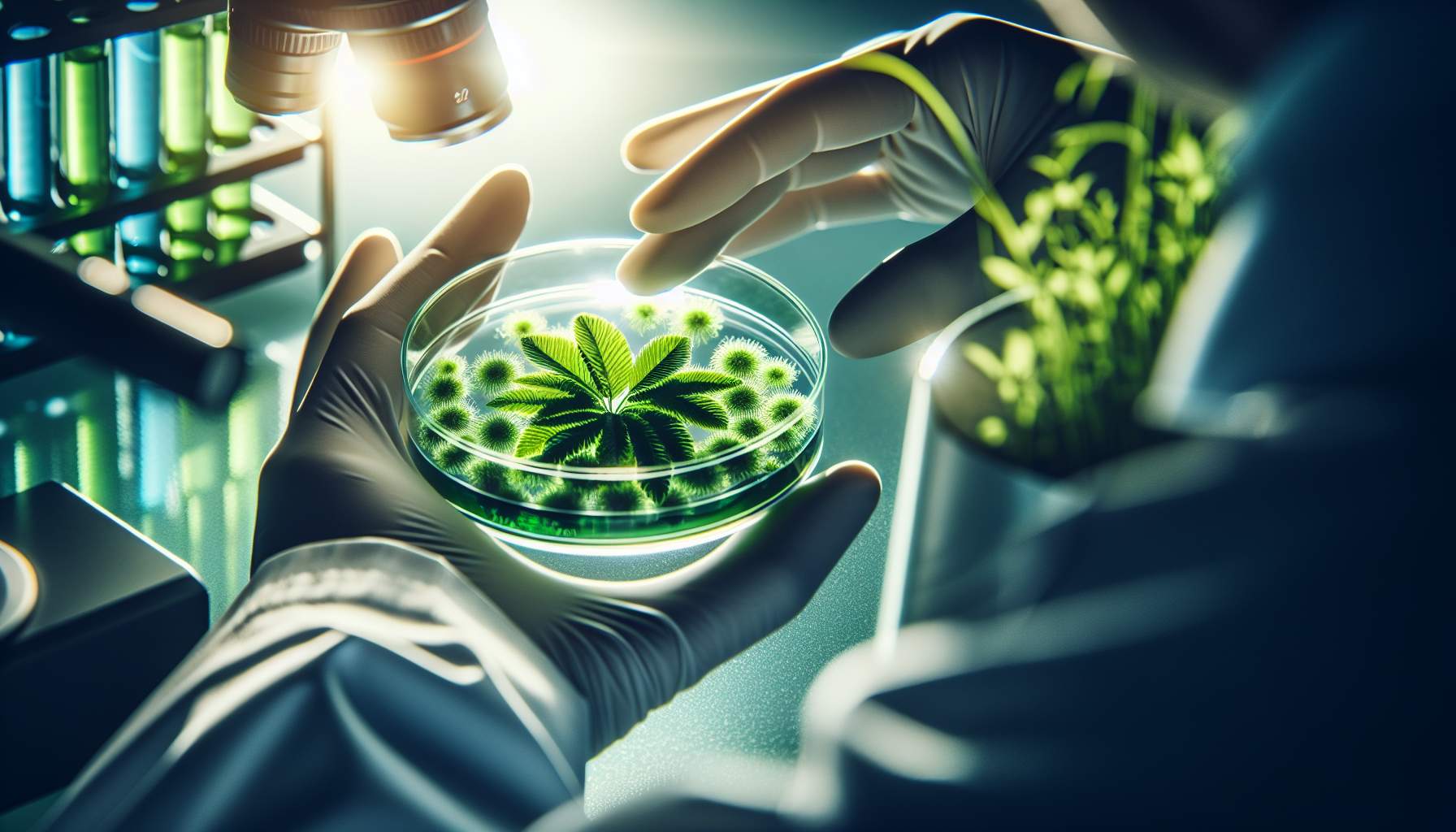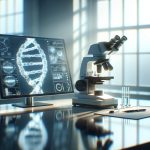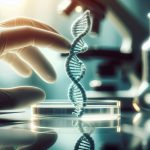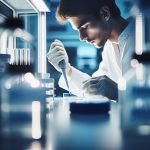Varigen Biosciences is on the cutting edge, crafting innovative methods to streamline how we create natural products. At the helm, co-founder and CEO David Mead shares how synthetic biology stands to revolutionize the way we manufacture drugs derived from natural sources. The heart of their breakthrough lies in a unique approach that focuses on efficiently capturing, amplifying, sequencing, and boosting the production of long DNA strands. This isn’t just about making things simpler; it’s about reshaping the landscape of pharmaceutical manufacturing by scaling up processes that were previously cumbersome or inefficient.
Imagine a world where the medicines we rely on are produced more quickly, effectively, and economically. That’s the vision driving Varigen Biosciences. By leveraging their advancements in technology, they promise to make significant strides in drug development—a boon for both industry professionals and patients awaiting newer and better treatments. Through these efforts, David Mead and his team aim not only to enhance how natural product drugs are made but also to open new avenues for innovation within synthetic biology itself.
Your experience before Varigen Biosciences
Three decades ago, at the inception of an illustrious career, a groundbreaking technology known as TA cloning was developed. This innovation fundamentally changed the landscape of genetic research by making it easier to clone PCR amplicons. The brainchild behind this invention chose to sell this technology to a then-small entity, Invitrogen. This company would later evolve into the giant now recognized as Thermo Fisher. The adoption and sales of TA cloning technology have been nothing short of phenomenal, generating nearly a billion dollars in revenue and securing its spot as the top cloning tool available.
This success ignited a spark that led to the establishment of Lucigen, another venture that would also enjoy considerable success before its acquisition by LGC four years back. The proceeds from this sale provided the foundation for what is now Varigen Biosciences. Varigen stands out in the realm of genome and metagenome mining, boasting unparalleled expertise in handling large DNA sequences and utilizing Big Data alongside AI technologies. Their work primarily focuses on unraveling natural products sourced from microbial or fungal origins for therapeutic applications.
In its initial phases, Varigen faced significant challenges due to the lack of sophisticated tools required for manipulating extensive DNA structures which are crucial for biosynthetic gene clusters responsible for producing natural product drugs. Despite these hurdles, they’ve managed to successfully capture and express natural product pathways numerous times with an impressive success rate.
Recently, Varigen shifted gears towards engineering specific pathways from existing drugs that are notoriously difficult or costly to produce through conventional means. This pivot aims at offering more sustainable growth opportunities beyond their previous model based on contract research.
Their target clientele includes pharmaceutical and biotech companies interested in leveraging engineered strains for drug production—one such promising strain offers potential against SARS viruses. While Varigen has no immediate plans to manufacture these products directly due to regulatory and logistical constraints associated with good manufacturing practices (GMP) and large-scale fermentation processes, they offer invaluable support in scaling up microbial medicine production using their advanced synthetic biology tools.
What do you know about your tech?
In today’s pharmaceutical landscape, natural substances form the backbone of numerous medications we rely on. From antibiotics like penicillin to immunosuppressants such as cyclosporin, it’s clear that nature is a treasure trove of therapeutic potential, contributing to medicines worth over half a trillion dollars.
However, harnessing these natural compounds isn’t straightforward. The genetic pathways they stem from are vast—stretching from 40 kilobytes to more than 400 kilobytes, making traditional extraction methods like PCR inadequate, particularly with GC-rich organisms.
Enter CRISPR-cas9, a groundbreaking technology initially used for editing genes within live organisms (in-vivo). Scientists have now pivoted its application towards extracting and manipulating large DNA segments in a controlled environment (in-vitro). This approach not only allows for the precise ‘snipping’ out of desired paths but also their subsequent modification and reproduction at an unprecedented speed and scale. With CRISPR-cas9’s ability to recognize specific sequences within the DNA, researchers can efficiently isolate and focus on the genetic material of interest.
The leap from merely identifying these pathways to successfully getting them expressed was monumental. To tackle this challenge, innovative expression technologies were developed. As of now, only a handful of companies have mastered this intricate process of capturing and tweaking natural product pathways outside living cells.
Reflecting upon traditional pharmaceutical practices sheds light on why this advancement is so pivotal. In the past, drug discovery involved cultivating bacteria and meticulously screening cultures to unearth new antibiotic or anticancer properties—a method that has become less effective over time due to repetitive discoveries leading major pharmaceutical players to abandon natural product research.
Nonetheless, with advancements in genome sequencing comes hope. The sheer volume of sequenced microbial genomes available today—millions thus far—opens up new realms for exploration. Tools like antiSmash allow scientists to scan these genomes for clues pointing toward undiscovered natural products by identifying key enzyme signatures without having to grow cultures first.
This shift signifies a paradigm change in how we discover drugs from nature’s bounty—a transition fueled by technological innovation that promises access to an even broader arrayof novel therapeutics waiting just beneath our current understanding. With every genome sequenced, we’re not just uncovering life’s blueprint; we’re stepping closer towards unearthing medicinal wonders hidden within.
Uses for Varigen’s Tech

In the 1970s, a powerful antiviral and anticancer agent named plitidepsin was identified in sea squirts. This compound stood out for its effectiveness, safety for human use, and efficient absorption by the body. Initially, it could only be sourced from tunicates, marine organisms not easily harvested en masse. Consequently, PharmaMar undertook synthetic production efforts. Despite their endeavors to secure approval for its use as an anticancer treatment—a process spanning over a decade—success eluded them.
Recent research highlighted plitidepsin’s superiority over Remdesivir in treating SARS by a factor of thirty. Despite Remdesivir generating sales upwards of $2.4 billion last year alone, its efficacy against SARS remains questionable. However, the astronomical production cost of approximately $100 per milligram positions this promising treatment beyond the reach of all but the wealthiest patients.
A groundbreaking discovery involves three strains of the bacteria Tistrella, capable of naturally producing plitidepsin albeit in minuscule quantities due to an enzymatic deficiency—one that researchers believe they can rectify using biotechnological approaches. By repairing this flaw and employing industry-standard optimizations, it’s feasible to increase production efficiency drastically—from a mere fraction of a milligram per liter to 500 mg per liter—thereby slashing manufacturing costs significantly.
This advancement paves the way for affordable mass production and sets the stage for plitidepsin entering phase three clinical trials with boosted optimism about its market potential which could soar to billions globally. Notably, while PharmaMar holds the patent for chemical synthesis, our team has secured rights for biological manufacturing—which promises more competitive pricing when supplying therapeutic companies.
With plans well underway and expectations set on introducing an economically viable version by next year’s first half, we stand on the brink of making this life-saving treatment accessible and affordable to nearly everyone—a true game-changer in global healthcare equity that exemplifies how innovation can bridge gaps between groundbreaking scientific discoveries and real-world patient benefits.
What problems do you intend to resolve for your clients?
Developing new medications is an arduous and pricey journey, often taking many years and demanding billions in investment. The pharmaceutical industry has historically leaned towards chemical synthesis for producing complex compounds due to the challenges inherent in their manufacturing process. However, this method comes at a steep cost compared to the potential of microbial fermentation—a technique that could drastically slash expenses if successfully harnessed.
The core difference between these two production strategies lies in their cost-efficiency: chemical synthesis can be exorbitantly expensive compared to biological methods like fermentation. The latter doesn’t require the compound to naturally occur in the organism being used for production; instead, it involves transferring and expressing genes from one organism into another more suitable for large-scale production.
Despite its clear advantages, only a handful of companies are exploring this avenue, primarily focusing on drug discovery through traditional means—which is not only time-consuming but also significantly more costly. There’s a missed opportunity in enhancing strains for overproducing valuable therapeutics which could quietly revolutionize drug development.
Currently, synthetic biology tools remain underutilized within pharma, leaving natural products synthesized chemically at a higher financial and environmental cost. Yet, there’s a growing movement aiming to shift this paradigm by employing advanced synthetic biology techniques. These innovations promise to streamline the manufacture of drugs derived from microbes at scale—potentially leading us into a new era of pharmaceutical production that leverages the best of both worlds: nature’s ingenuity and human technological advancement.
In essence, we’re standing on the brink of a revolution that could transform how medicines are made—making them more accessible while reducing our reliance on costly chemical processes. With these pioneering tools and approaches at our disposal, there’s substantial hope for ushering in an era where efficient drug production aligns with economic viability and ecological sensibility.
Advantages of drugs from natural sources over synthetic medications
Tiny molecules play a massive role in our health, steering the ship when it comes to several diseases. These microscopic entities, especially those that make up our gut’s ecosystem, have a direct link to conditions ranging from mental disorders and obesity to Crohn’s disease. The world of bacteria within us is vast, housing both allies and foes. While some bacteria are life-saving champions, others are like undercover agents causing havoc without an outright invasion – they engage in a subtle kind of sabotage by messing with our body’s chemistry.
The natural world has been perfecting the art of chemical creation for over a billion years, primarily through these tiny microbial inhabitants. They craft complex compounds through their interactions – substances so unique and powerful that replicating them synthetically remains a formidable challenge. Their secret sauce? An almost magical ability to mix and match enzymes creating new molecular structures equipped to tackle any new threat or need that arises.
The variety we see in these microbial products is nothing short of astonishing. Many of their functions remain mysteries to us; yet, what we do know points towards their incredible potential as medicines. In fact, when you scan the array of drugs currently available on the market, it becomes apparent that those derived from microbes and plants hold top ranks in terms of diversity and potency.
In essence, this microscopic warfare and intricate dance of molecules not only highlight nature’s ingenuity but also underscore an untapped reservoir of medical marvels waiting to be discovered. As we continue peeling back layers from this hidden world, who knows what other secrets will come tumbling out?




















